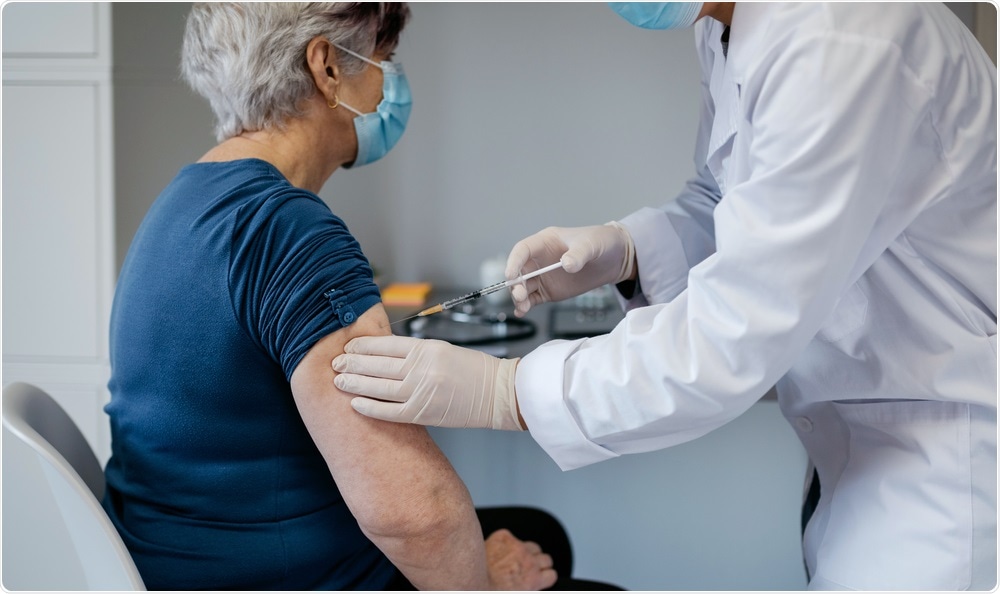Vaccine breakthrough infections (VBTs) occur in individuals, even after they have been vaccinated against a particular pathogen. With the radical increase in the number of coronavirus disease (COVID-19) cases caused by the Delta variant of the severe acute respiratory syndrome coronavirus 2 (SARS-CoV-2) in the United States of America, understanding the rate and clinical features associated with VBTs among those already vaccinated is of critical public health importance.
In a recent study published on the preprint server medRxiv*, researchers conducted a pilot study to assess the prevalence and features of VBTs through the use of sequencing and case data on Washoe County, Nevada available from the Washoe County Health District (WCHD) and Nevada State Public Health Laboratory (NSPHL).
 Study: An Analysis of SARS-CoV-2 Vaccine Breakthrough Infections and Associated Clinical Outcomes. Image Credit: David Pereiras / Shutterstock.com
Study: An Analysis of SARS-CoV-2 Vaccine Breakthrough Infections and Associated Clinical Outcomes. Image Credit: David Pereiras / Shutterstock.com

 *Important notice: medRxiv publishes preliminary scientific reports that are not peer-reviewed and, therefore, should not be regarded as conclusive, guide clinical practice/health-related behavior, or treated as established information.
*Important notice: medRxiv publishes preliminary scientific reports that are not peer-reviewed and, therefore, should not be regarded as conclusive, guide clinical practice/health-related behavior, or treated as established information.
Analysis of public health data from WCHD
In the current study, the researchers collected all available public health data from February 12, 2021, to July 29, 2021. A total of 6,399 new cases of COVID-19 were reported during this time, of which 6,128 (95.8%) were successfully traced back to their sources. Out of these 6,399 cases, the Health District identified 339 (5.5%) as breakthrough infections.
VBT cases were defined as any positive reverse-transcriptase polymerase chain reaction (RT-PCR) test for individuals fully vaccinated for 14 days or more, prior to symptom onset or routine testing. The WCHD collected individual-level VBT data for 338 cases out of the 339 traced.
Recorded parameters on these VBTs included demographics such as age, sex, gender, and race/ethnicity, as well as clinical data such as vaccine type and dosage schedule, symptom onset; hospitalization or death. Information on cycle threshold (Ct) values and variants of interest, primarily from the NSPHL and from other partner laboratories when necessary were also collected.
VBT accounted for a small share of total infections between February 12 and July 29, 2021. The 338 reported VBT cases accounted for only 0.14% among Washoe’s vaccinated population across the study period, in comparison with a 2.54% rate among those unvaccinated.
Severe outcomes in vaccinated individuals were also rare. Out of the 5,961 traced cases, 289 (86%) vaccinated individuals presented with symptomatic infections, but only 17 were hospitalized (5%).
No deaths were reported in the cases of VBT, and the cases of hospitalizations involved mostly elderly people. However, elderly people were less prone to breakthrough infections and more likely to present without symptoms compared to younger age groups.
Study implications
The current analysis from Washoe County, Nevada showed a more than 18-fold lower rate of breakthrough infections among vaccinated people over the rate of infections among unvaccinated individuals. Most importantly, the rates of severe illness were low in vaccinated individuals.
These findings stress the efficacy of vaccines in preventing severe infections and hospitalizations. There is already a growing body of data that can reassure the public on the real-world effectiveness of COVID-19 vaccines.
However, it should be noted that the data discussed here is part of a pilot dataset used for analyzing the outcomes of vaccinations. Nonetheless, this analysis adds to existing literature outlining the risks of VBTs and emphasizes the need for health authorities to monitor evolving trends in vaccine breakthrough data.

 *Important notice: medRxiv publishes preliminary scientific reports that are not peer-reviewed and, therefore, should not be regarded as conclusive, guide clinical practice/health-related behavior, or treated as established information.
*Important notice: medRxiv publishes preliminary scientific reports that are not peer-reviewed and, therefore, should not be regarded as conclusive, guide clinical practice/health-related behavior, or treated as established information.